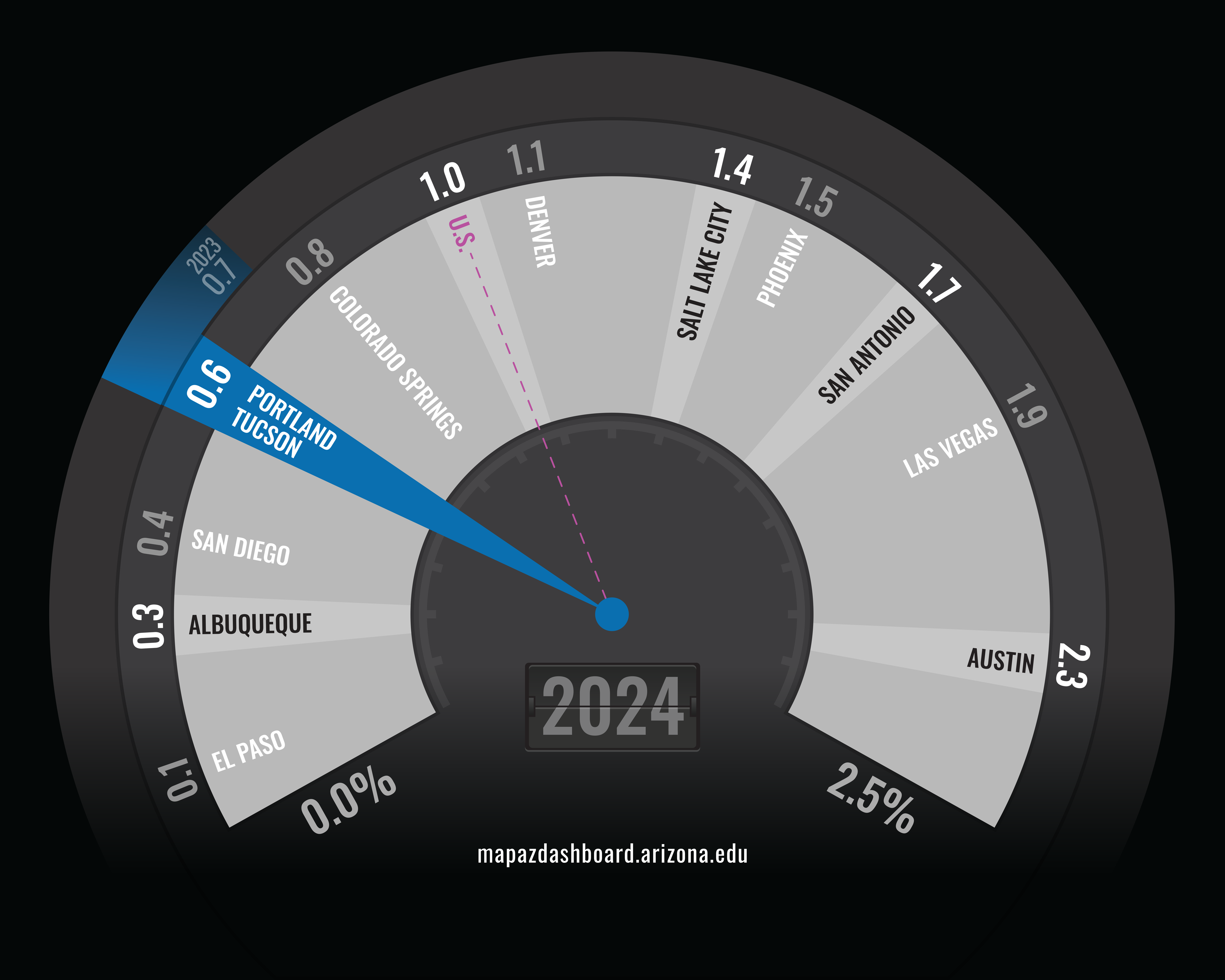 Examine Population Growth Rate in Tucson, Arizona MSA
Examine Population Growth Rate in Tucson, Arizona MSA
How are we doing?
Population Growth Rate (2024)

The population in the Tucson Metropolitan Statistical Area (MSA) increased by 0.6% in 2024, bringing the total population to 1,086,634 residents. This growth rate ranked Tucson eighth out of 12 peer western MSAs. Austin experienced the fastest growth at 2.3%, while El Paso had the slowest at 0.1%. Tucson’s population growth has steadily increased since 2010.
Why is it important?
Population growth is an important measure of community growth, reflecting both net migration and natural increase (births minus deaths). Higher population growth rates can be due to increases in employment, the quality of local services, schools, and leisure opportunities. Additionally, new growth leads to increased demand for housing, goods, services, and infrastructure, which can spur regional economic development. The population is a carefully monitored statistic; levels and growth rates are the basis for a myriad of public decisions related to infrastructure and community planning. For example, federal apportionments for highways are largely based on metropolitan population levels and expected growth within urbanized areas.
How do we compare?
In 2023, the 20-44 year age bracket posted the largest population share for Tucson, the state of Arizona, and the nation at 33.0%, 33.0%, and 33.3%, respectively. The 65 and older age bracket posted the smallest share in all three, with higher rates in Tucson and Arizona, reflecting a large number of retirees in the state. In Tucson, the under-20 population and those 45-64 each represented 22.9% of the population in 2023. Tucson’s under-20 population share was below the national and state rate.
In 2023, Tucson had a larger share of Hispanic or Latino residents at 36.1% than the state at 31.0%. Further, Tucson’s Hispanic or Latino population share was nearly double the national rate of 19.0%. Conversely, Tucson had a slightly lower percentage of those identifying as white, non-Hispanic than Arizona or the nation. The Black and Asian populations in Tucson were also lower than national rates.
What are the key trends?
The Tucson MSA and the state of Arizona have seen more volatility in their population growth rates than the U.S. Nationally, population growth remained near 1.0% until 2010, when it slowly began to decline. The U.S. population growth of 0.2% in 2021 was the slowest rate in over twenty years. However, population growth nationally increased to 1.0% in 2024. That was the fastest growth in more than a decade. Tucson and Arizona posted wide fluctuations in population growth between 2001 and 2019 with a high of 2.8% in Tucson and 3.5% in Arizona. At the end of the Great Recession, Tucson posted negative population growth. Since 2010, Tucson's population has grown annually, with rates ranging from 0.2% to 1.3%.
How is it measured?
Population growth rate data are computed from population levels reported by the Arizona Office of Economic Opportunity and the Census Bureau's Population Estimates Program (PEP). Population profile information is gathered from the U.S. Census Bureau American Community Survey (ACS) five-year estimates.












